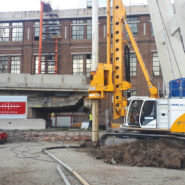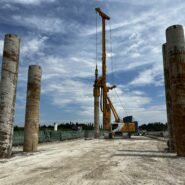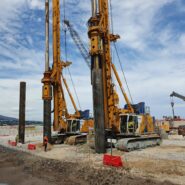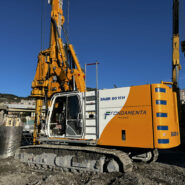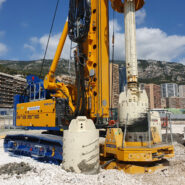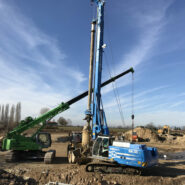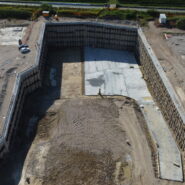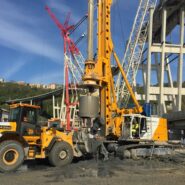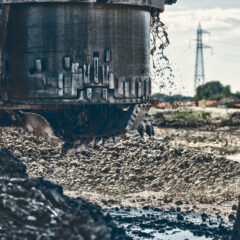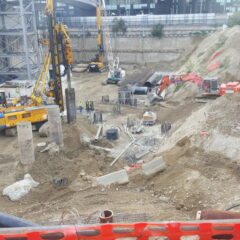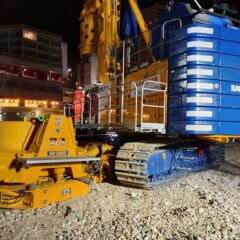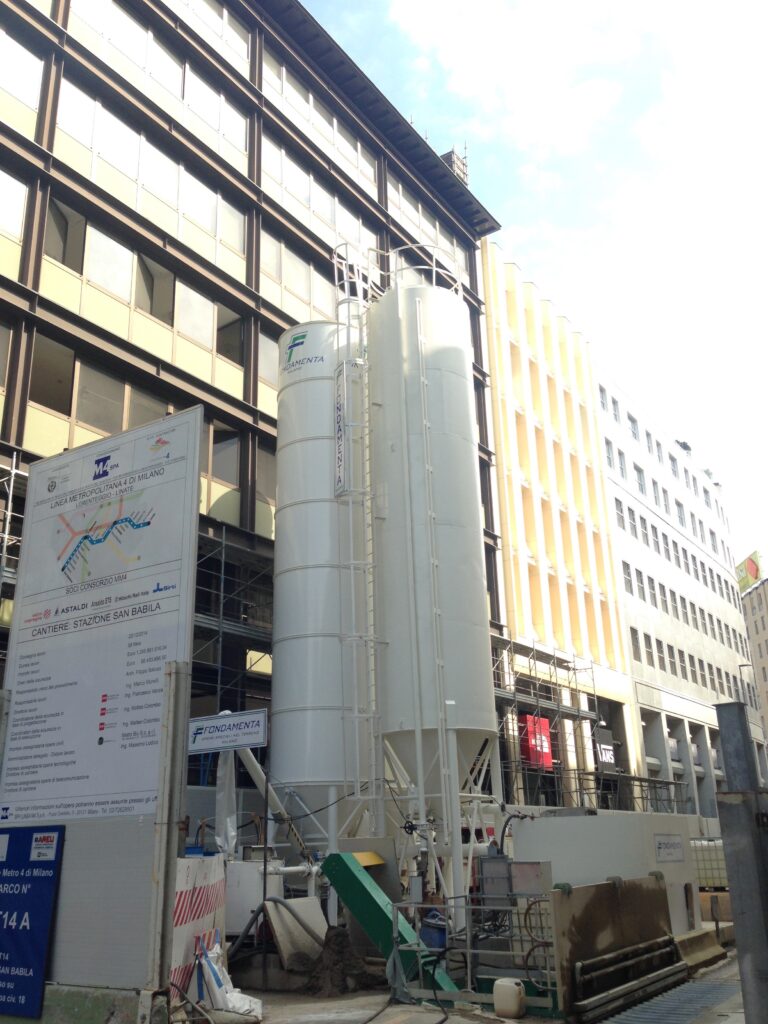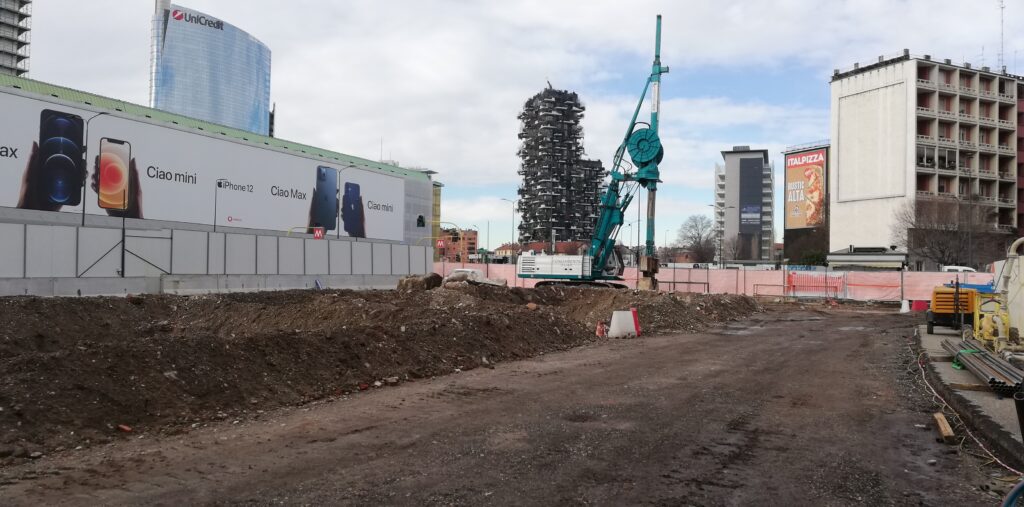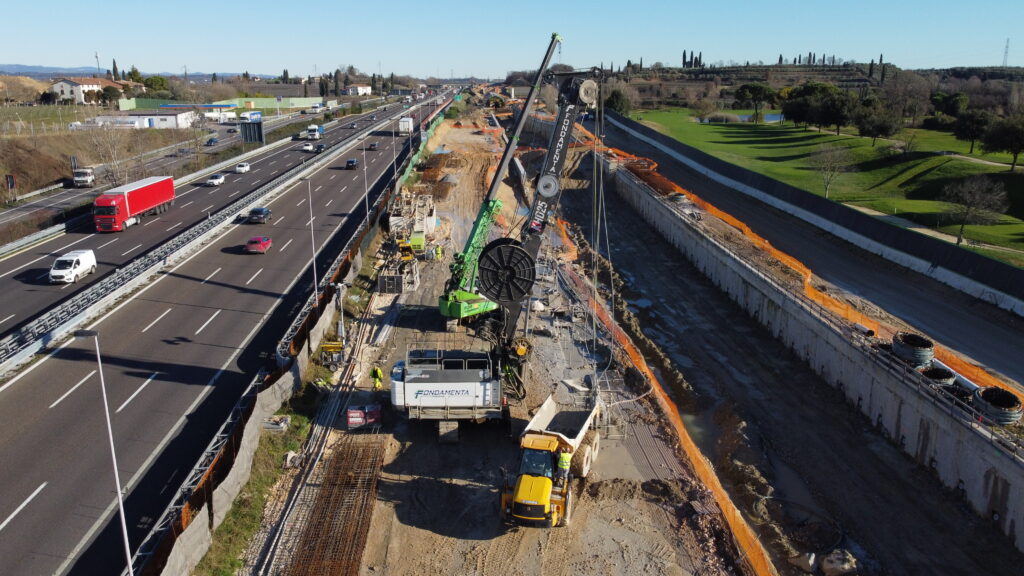Drilled Piles
Drilled piles are structural elements with diameters ranging from 500mm to 3000mm used in foundations to transfer loads from structures to more resistant underlying soil. They are created by drilling into the ground and filling the hole with reinforced concrete. Ideal for supporting tall buildings, bridges, viaducts, and other heavy structures, they ensure stability and safety even in challenging geotechnical conditions. They are also used for creating Berlin walls for excavation front containment.
Types and Techniques
- Drilled Piles with Bentonite or Polymer Slurry: Uses slurry to support the excavation, employing various tools like buckets, corers, and augers.
- Drilled Piles with Casing: Uses a temporary metal casing inserted by the drilling rig to support the excavation.
Functions of Drilled Piles
- Load Transfer: Transfer vertical and horizontal loads from the structure to deeper, more resistant soil.
- Soil Stabilization: Provide support and stability to surrounding soil, preventing collapses and differential movements.
- Support for Deep Foundations: Create deep foundations to enhance the stability and load-bearing capacity of structures.
Applications of Drilled Piles
- Buildings: Used to create deep foundations supporting the weight of overlying structures.
- Bridges and Viaducts: Provide support and stability for large structures subjected to dynamic and variable loads.
- Transport Infrastructures: Applied in road, railway, and subway projects to improve soil stability and prevent collapses.
- Maritime Works:Used in ports, docks, and other marine structures to provide stable foundations in aquatic environments.
- Industrial Buildings: Essential for supporting the weight of heavy machinery and other industrial equipment.
Advantages of Drilled Piles
- High Load-Bearing Capacity: Provide excellent load-bearing capacity due to the combination of concrete and steel reinforcement.
- Adaptability: Can be used in a wide range of geotechnical conditions, including unstable and water-saturated soils.
- Minimal Vibrational Impact: Drilling causes fewer vibrations compared to other foundation techniques, reducing the risk of damaging nearby structures.
- Precision in Construction: The drilling technique allows precise control of pile depth and diameter.
- Versatility: Suitable for various applications, from building foundations to soil stabilization interventions.
Design of Drilled Piles
Designing drilled piles requires careful evaluation of geotechnical conditions and the stresses they will endure. Key factors include:
- Geotechnical Analysis: Assessing soil properties to determine bearing capacity and stabilization needs.
- Structural Loads: Considering vertical and horizontal loads the piles will bear.
- Hydraulic Conditions: Presence of water tables and water infiltration risks.
- Regulations and Standards: Compliance with local and international norms to ensure safety and quality.
- Durability and Maintenance: Selecting materials and construction techniques to ensure longevity and reduce maintenance costs.
Related projects
Are you interested in this service?
Contact us by filling the form.

